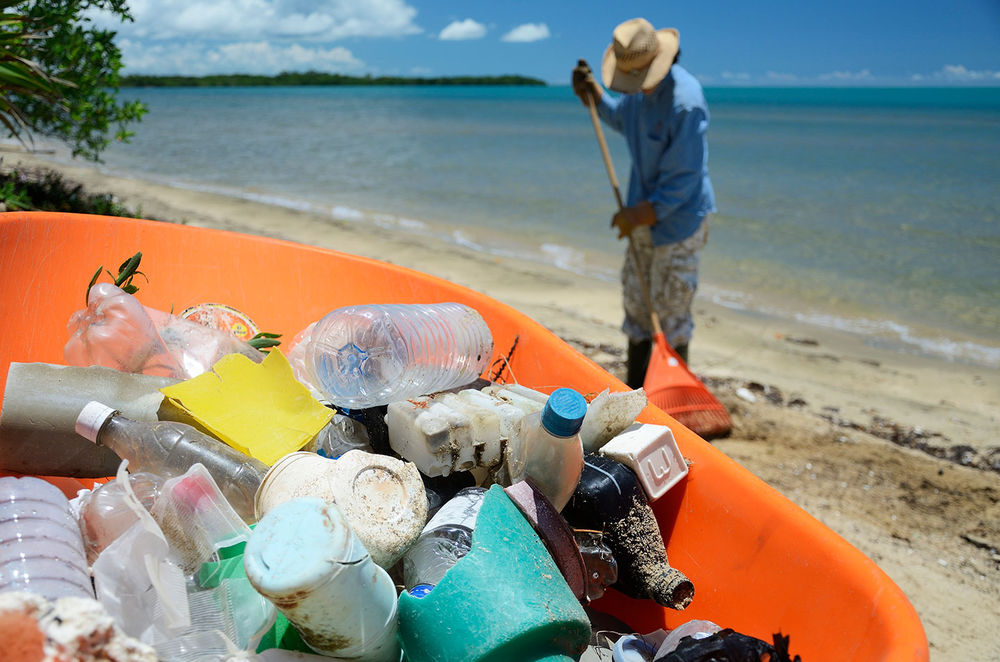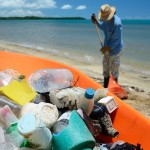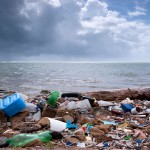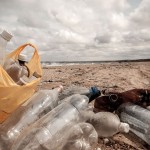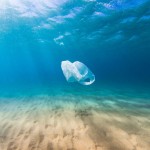Nearly 300 million tons of plastic is produced each year, half of which is for single use. Sadly, more than 8 million tons of plastic is dumped into our oceans every year.
“The greatest threat to our planet is the belief that someone else will save it,” says ocean explorer Robert Swan.
How can you help? Remember Paul Simon’s song “Fifty Ways to Leave Your Lover”? We’ve got 50 Ways to Leave Your Plastic.
Editor’s note: Most of these tips were adapted from ones on the Green Education Foundation and My Plastic Free Life websites.
1. Say no to plastic straws, even in restaurants. If you must use a straw, purchase a reusable stainless steel or glass straw.
2. Use a reusable produce bag. A single plastic bag can take 1,000 years to degrade. Purchase reusable produce bags (just be sure to wash them often).
3. Stop chewing gum. Gum is made of a synthetic rubber, aka plastic.
4. Buy common products in boxes instead of plastic bottles. Products like laundry detergent come in a cardboard box, which is more easily recycled than plastic. Try to avoid cardboard packaging that is coated in a thin layer of plastic, but it is possible to recycle these types of cartons.
5. Purchase food like cereal, pasta, beans and rice from bulk bins and put them in reusable bags or containers.
6. Reuse containers for storing leftovers or shopping in bulk.
7. Use a reusable bottle or mug for your beverages, and make sure to take it to your favorite to-go shop like Starbucks.
8. Bring your own containers for restaurant take-outs and when dining in, ask your restaurant server for a doggy-bag for your leftovers, rather than a styrofoam container.
9. Do you light candles often? Use matches instead of disposable plastic lighters or invest in a refillable metal lighter.
10. Become a citizen scientist and report your data on plastic marine debris.
11. Avoid buying frozen foods because their packaging is mostly plastic. Even those that appear to be packaged in cardboard are coated in a thin layer of plastic.
12. Don’t use plastic utensils at home and be sure to request restaurants do not pack them in your take-out box.
13. Ask your local grocer to take your plastic containers (for berries, tomatoes, etc.) back. If you shop at a farmers market they can refill it for you.
14. The EPA estimates that 7.6 billion pounds of disposable diapers are discarded in the U.S. each year. Use cloth diapers to reduce your baby’s carbon footprint.
15. Make fresh-squeezed juice or eat fruit instead of buying juice in plastic bottles.
16. Make your own cleaning products that will be less toxic and eliminate the need for multiple plastic bottles of cleaner.
17. Pack your lunch in reusable containers and bags.
18. Buy fresh fruits and veggies and bulk items instead of products that come in single-serving cups.
19. Use a razor with replaceable blades instead of a disposable razor.
20. Cups and yogurt tubs make great planters for your flower and vegetable seeds.
21. Shop locally, such as at farmers’ markets for fresh produce and eggs, bakeries for bread and butchers for meats since they often use less packaging to wrap items, or you can request them to use less plastic packaging.
22. Start a small herb and vegetable kitchen garden. Salad vegetables and herbs are really easy to grow outside in a small garden, in a hanging basket or on your kitchen windowsill. This way, you avoid buying produce that comes in plastic packaging.
23. Do you get your clothes dry-cleaned? Look for an eco-friendly dry cleaner and bring your own garment bag for pickups or ask for your clothes to be returned free of plastic wrap.
24. Line your garbage bins with paper bags or biodegradable trash bags instead of buying plastic trash bags.
25. Start a compost heap for your organic waste.
26. Buy condiments such as ketchup, mustard and salad dressing in glass jars instead of plastic bottles.
27. Stop using synthetic sponges for washing dishes or cleaning and use cotton cloths instead.
28. Celebrating with wine? Find wines that have cork stoppers instead of synthetic stoppers, since the natural material is completely biodegradable.
29. Place a lid or a plate on top of leftovers instead of using plastic wrap.
30. Mason jars or ceramic containers can store food — stop buying Tupperware and Ziploc baggies.
31. Wrap food in aluminum foil or look for beeswax-coated food wraps that can be used repeatedly.
32. Get creative: Reuse the bags that hold baked goods like bread for cleaning up after your dog.
33. Single-use coffee pods are popular and convenient, but stick to an old-fashioned coffee machine with a reusable filter.
34. Wear natural, organic textiles instead of synthetic ones such as nylon, acrylic or polyester. Did you know that in an average wash, 1,900 fibers come off a single synthetic article of clothing and that this is one of the most common types of plastic pollution in our oceans?
35. Try to use soaps, lotions and shampoos that come in solid bars instead of liquid form in a bottle. Or make your own.
36. Say no to products with microbeads (which might be included in the ingredients list as polyethylene or polypropylene).
37. Buy hair care, skin care and other beauty products that come in glass or metal containers.
38. Take electronics that are no longer functioning to e-waste facilities that can dispose of them properly.
39. Give your child wood or cloth toys, rather than plastic.
40. Ditto for pet toys. Buy catnip for cats and large ropes for dogs.
41. Burn candles (soy or beeswax, not paraffin) instead of buying air fresheners in plastic holders.
42. When ordering pizza, say no to the little plastic “table” in the middle of the pizza box.
43. Go to a local ice-cream shop and have them pack your favorite flavor in your own reusable container instead of buying ice cream the plastic tubs at the grocery store.
44. Try to buy large wheels of unwrapped cheese.
45. Do you protect your hands with plastic gloves while cleaning? Use natural rubber gloves instead.
46. Choose toilet paper that’s not wrapped in plastic.
47. Buy sunscreens that are not packaged in plastic.
48. Choose a plastic-free wooden hair brush.
49. Eat at your desk at work? Keep your own reusable plate, bowl, glass, and utensils at the office.
50. Learn how to correctly recycle plastic. Get familiar with the triangle-shaped recycling symbol on the bottom of most bottles and containers. Most recycling centers will collect Nos. 1, 2 and 5 plastics such as water bottles and Tupperware. Plastics that are Nos. 3, 4 and 6, like disposable cups and vinyl shower curtains, are moderately recyclable. No. 7 is nearly impossible to recycle because it’s made of a combination of all types of plastic — so avoid using it if possible.
Source: Sport Diver







